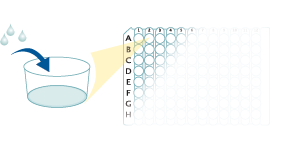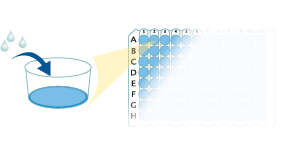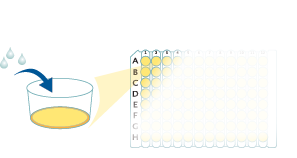



 下载产品说明书
下载产品说明书 下载SDS
下载SDS 用小程序,查商品更便捷
用小程序,查商品更便捷



 收藏
收藏
 对比
对比 咨询
咨询Product Summary
Recovery
The recovery of ACE spiked to levels throughout the range of the assay in various matrices was evaluated.
| Sample Type | Average % Recovery | Range % |
|---|---|---|
| Cell Culture Supernates (n=4) | 98 | 89-106 |
| Heparin Plasma (n=4) | 100 | 94-106 |
| Serum (n=4) | 99 | 91-106 |
Linearity
Scientific Data
Assay Procedure
Refer to the product- Prepare all reagents, standard dilutions, and samples as directed in the product insert.
- Remove excess microplate strips from the plate frame, return them to the foil pouch containing the desiccant pack, and reseal.
- Add 100 µL of Assay Diluent to each well.
- Add 50 µL of Standard, control, or sample to each well. Cover with a plate sealer, and incubate at room temperature for 2 hours on a horizontal orbital microplate shaker.
- Aspirate each well and wash, repeating the process 3 times for a total of 4 washes.
- Add 200 µL of Conjugate to each well. Cover with a new plate sealer, and incubate at room temperature for 2 hours on the shaker.
- Aspirate and wash 4 times.
- Add 200 µL Substrate Solution to each well. Incubate at room temperature for 30 minutes on the benchtop. PROTECT FROM LIGHT.
- Add 50 µL of Stop Solution to each well. Read at 450 nm within 30 minutes. Set wavelength correction to 540 nm or 570 nm.





Human ACE Quantikine ELISA Kit Summary

Background: ACE/CD143
ACE and ACE-2, two cell surface proteases, are important regulators of the renin-angiotensin system (RAS), which plays a key role in maintaining blood pressure homeostasis and fluid salt balance in mammals. Because of its location and specificity, ACE plays additional roles in immunity, reproduction and neuropeptide regulation. ACE exists in two isoforms. Somatic ACE comprises two highly similar protease domains whereas germinal ACE comprises a single protease domain. ACE-2 consists of a single protease domain and is an essential regulator of heart and lung function. It is also a cellular receptor for the Spike protein of SARS cornonavirus that causes severe acute respiratory syndrome.











 危险品化学品经营许可证(不带存储) 许可证编号:沪(杨)应急管危经许[2022]202944(QY)
危险品化学品经营许可证(不带存储) 许可证编号:沪(杨)应急管危经许[2022]202944(QY)  营业执照(三证合一)
营业执照(三证合一)